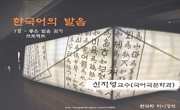대한민국은 지난 몇 십년 사이에 눈분신 경제성장을 해왔다. 싱기포르, 홍콩,대만과 함께 아시아의 대표적인 Tiger 나라에 속하며,인상적인 수출 발전이 경제 발전을 뒷받침 해준다. 세계시...
http://chineseinput.net/에서 pinyin(병음)방식으로 중국어를 변환할 수 있습니다.
변환된 중국어를 복사하여 사용하시면 됩니다.
- 中文 을 입력하시려면 zhongwen을 입력하시고 space를누르시면됩니다.
- 北京 을 입력하시려면 beijing을 입력하시고 space를 누르시면 됩니다.
https://www.riss.kr/link?id=T8443277
- 저자
-
발행사항
[S.l.] : Univ. Zurich, 1993
-
학위논문사항
Thesis(doctoral) -- Univ. Zurich , 1993
-
발행연도
1993
-
작성언어
독일어
- 주제어
-
KDC
326.16 판사항(4)
-
형태사항
1v.(various pagings) ; 26cm.
-
소장기관
-
0
상세조회 -
0
다운로드
부가정보
국문 초록 (Abstract)
이는 국제무대에서 성공적으로 활약중인 삼성, 현대, 대우 와 LG 같은 재벌그룹의 기여도가 높기 때문이다.
여태까지 한국 기업들의 성공 비결에 대해 알려진 게 많지않고 또한 "제 2의 일본", "주식회사 한국"과 같은 유행어로만은 설명하기 힘들다.
위의 논문은
1. 한국이란 나라, 한국인의 성향(mentality), 경제발전과 4대 재벌 그룹들을 자세히 소개한다.
2.비약적인 경제성장을 가능케 한 한국의 성공 본 (success model) 과 성공 요소 (success factor)를 제시한다.
3.한국기업과 일본 기업들이 세계시장에서 적용한 마케팅전략을 비교해서 공통점과 차이점을 분석한다.
대한민국은 지난 몇 십년 사이에 눈분신 경제성장을 해왔다. 싱기포르, 홍콩,대만과 함께 아시아의 대표적인 Tiger 나라에 속하며,인상적인 수출 발전이 경제 발전을 뒷받침 해준다. 세계시장에서 삼성TV , 현대 자동차 등 나날이 많은 한국 제품들을 접할 수 있다.
이는 국제무대에서 성공적으로 활약중인 삼성, 현대, 대우 와 LG 같은 재벌그룹의 기여도가 높기 때문이다.
여태까지 한국 기업들의 성공 비결에 대해 알려진 게 많지않고 또한 "제 2의 일본", "주식회사 한국"과 같은 유행어로만은 설명하기 힘들다.
위의 논문은
1. 한국이란 나라, 한국인의 성향(mentality), 경제발전과 4대 재벌 그룹들을 자세히 소개한다.
2.비약적인 경제성장을 가능케 한 한국의 성공 본 (success model) 과 성공 요소 (success factor)를 제시한다.
3.한국기업과 일본 기업들이 세계시장에서 적용한 마케팅전략을 비교해서 공통점과 차이점을 분석한다.
다국어 초록 (Multilingual Abstract)
In the early 20th century, Coe dichotomized tradition and transformation as the purpose of religious education, pursuing transformation over tradition. However, in developing a theory whose aim wae the creation of a new world he maintained a balance between socialization and intentional teaching as process.
In the mid 20th century, exponents of the Christian education mivement attempted to recover the tradition element they thought had been lost to the emphasis on transformation. For this movement, recovering tradition meant finding a suitable theology onwhich to base "Christian" education.
In the late 20th century, sa society and culture became more diverse, secular and pluralistic, Nelson and Little shared the same purpose : transformation of society through tradition, while advocating different processes. Both are responding to Dwayne Huebner's question'"... is education in a religious community necessary or is living with others inherent1y educational?'
At the close of the 20th century, the overrding question is, "how can we transform this dysfunctional society?" In response to this question some contemporary theories will be introduced.
In conclusion, this study suggests that dichotomy between handing on tradition and transformation as a purpose for religious education is a false dichotomy. While distinctive, neither is complete without the other. The same is true with socialization and teaching as process. We must overcome the dichotomy of either/or, and embrace the tension of both/and.
The pernnial tension between tradition and transformation as the purpose of religious education has existed throughout history but it was George Allbert Coe who articulated this tension with his question, "Shall the primary purpose of Christian educat...
The pernnial tension between tradition and transformation as the purpose of religious education has existed throughout history but it was George Allbert Coe who articulated this tension with his question, "Shall the primary purpose of Christian education be to hand on a religion, or to create a new worid?" This study ezamines historical understandings of the tension and explores the ways in which twentieth century religious educators, especially Coe, C. Ellis Nelson, John Westerfoff, Sara Little, and Mary Boys, handled both the tension between tradition and transformation as purpose, and the tension betweensocialization and teaching as process/method. The purpose of this dissertation is to lay a for understanding these tensions, a foundation we can use to bulid educational theories.
In the early 20th century, Coe dichotomized tradition and transformation as the purpose of religious education, pursuing transformation over tradition. However, in developing a theory whose aim wae the creation of a new world he maintained a balance between socialization and intentional teaching as process.
In the mid 20th century, exponents of the Christian education mivement attempted to recover the tradition element they thought had been lost to the emphasis on transformation. For this movement, recovering tradition meant finding a suitable theology onwhich to base "Christian" education.
In the late 20th century, sa society and culture became more diverse, secular and pluralistic, Nelson and Little shared the same purpose : transformation of society through tradition, while advocating different processes. Both are responding to Dwayne Huebner's question'"... is education in a religious community necessary or is living with others inherent1y educational?'
At the close of the 20th century, the overrding question is, "how can we transform this dysfunctional society?" In response to this question some contemporary theories will be introduced.
In conclusion, this study suggests that dichotomy between handing on tradition and transformation as a purpose for religious education is a false dichotomy. While distinctive, neither is complete without the other. The same is true with socialization and teaching as process. We must overcome the dichotomy of either/or, and embrace the tension of both/and.











